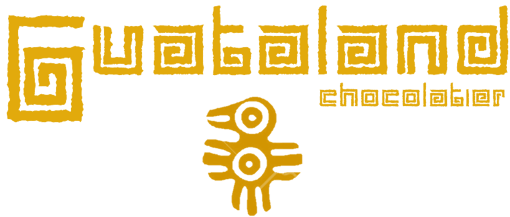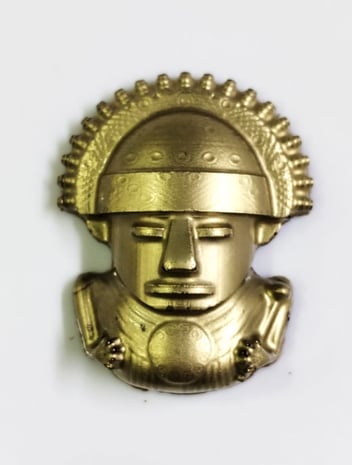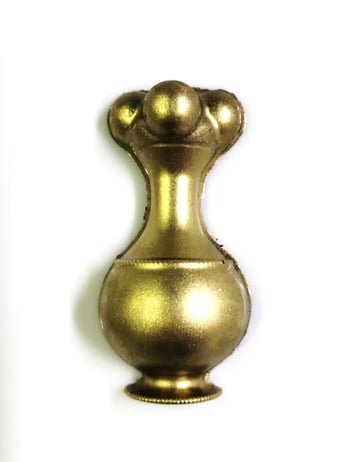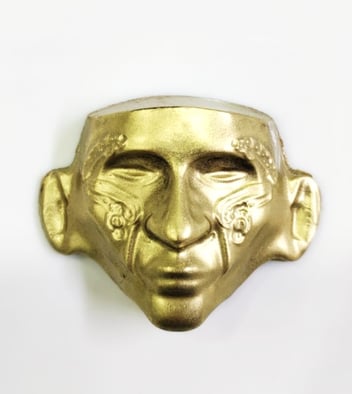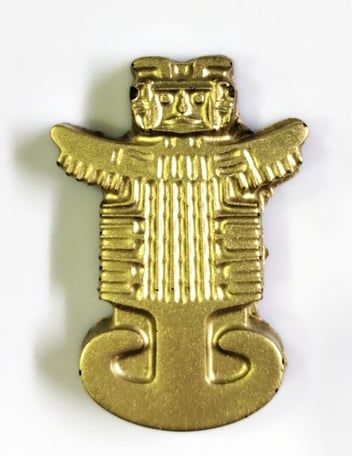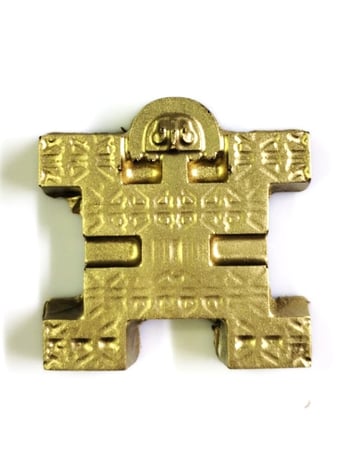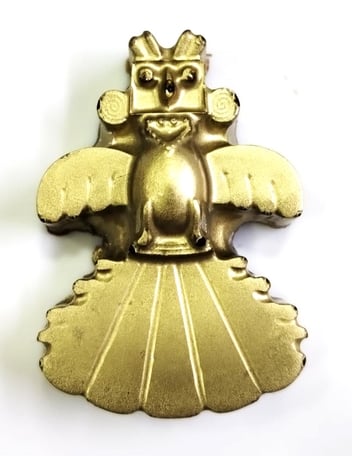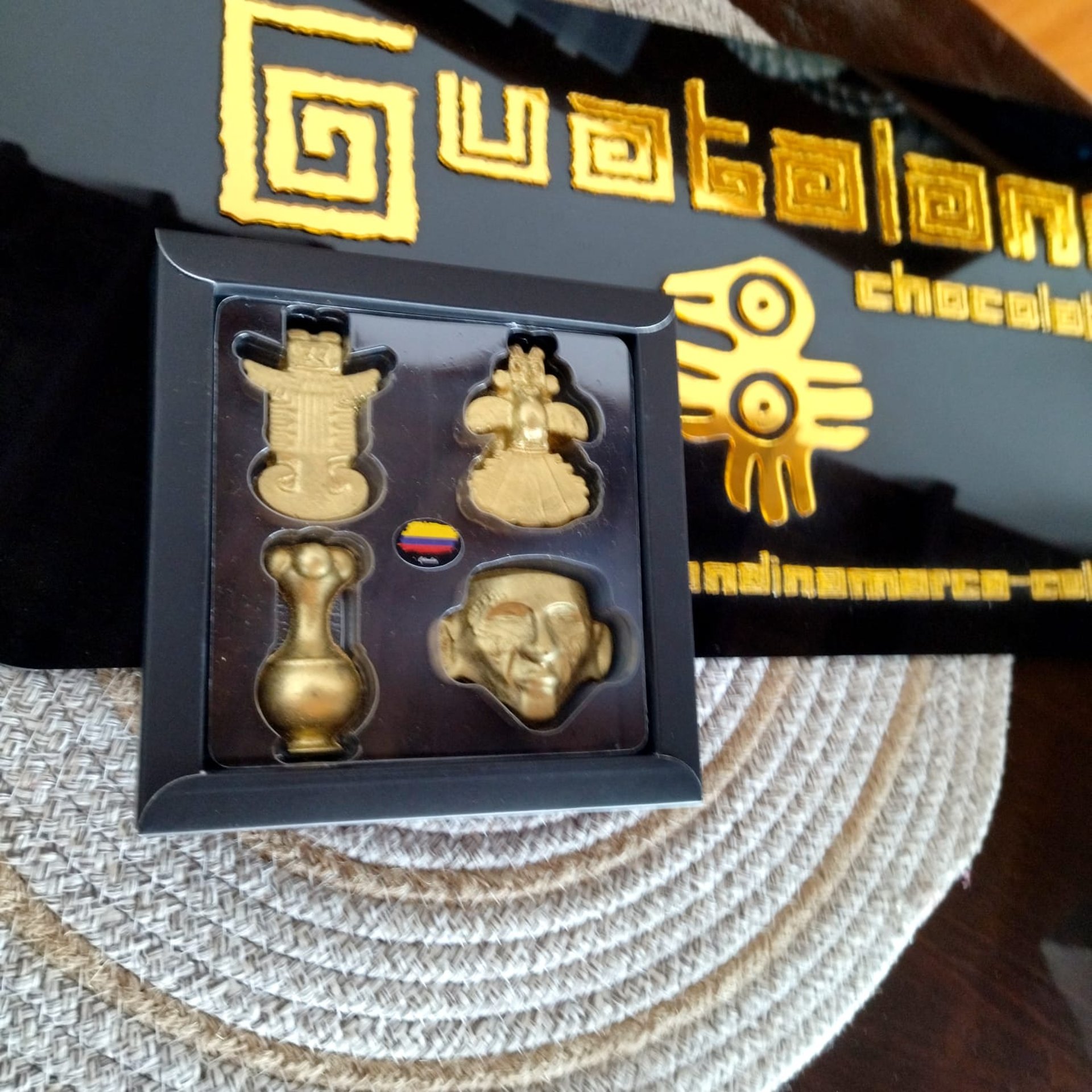
"ElDorado" Jewels
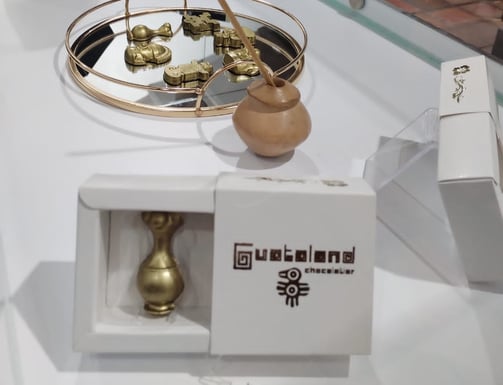

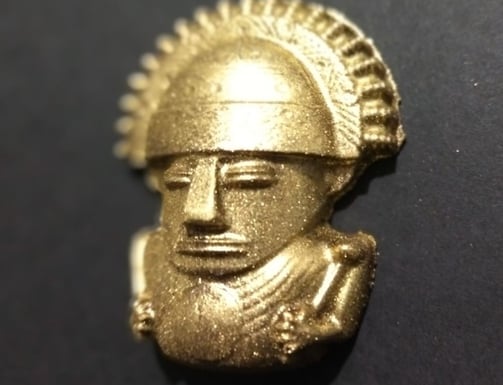

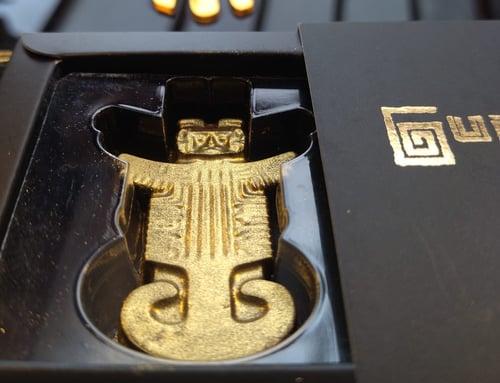

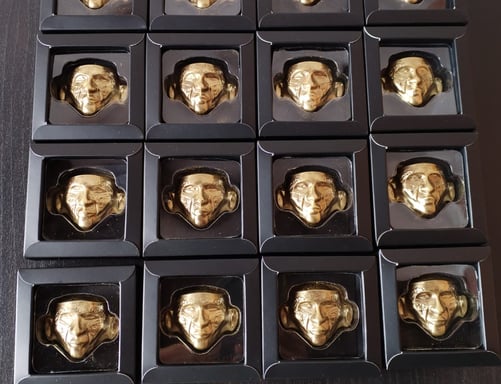



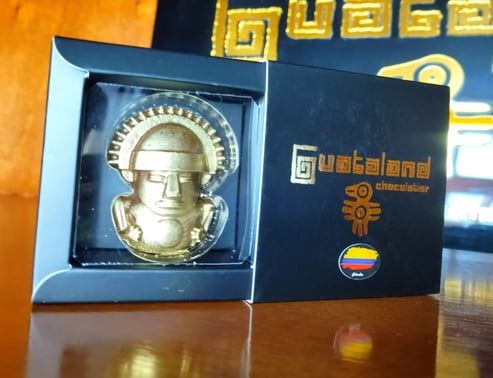


It is our most beloved and cherished chocolate jewel, as it is the figure that inspired the idea behind the "Jewels of ElDorado" collection. It was the first piece to be digitized with the utmost detail and dedication by the artist, giving rise to the signature mold of GuataLand Chocolatier.
"Guatavita was the name of one of the most powerful Muisca chieftains, whose principal wife was caught by him in the act of adultery. The chieftain had his rival killed and forced his wife to publicly eat her lover’s heart. Terrified, the chieftainess took her daughter in her arms and fled to the Guatavita lagoon, where she threw herself in. The chieftain, regretful, asked a priest to rescue his wife using his powers, but it was all in vain. The chieftainess became the tutelary goddess of the lagoon, venerated from then on until shortly before the arrival of the Conquistadors through a grand political and religious ceremony filled with gold and precious stones."
